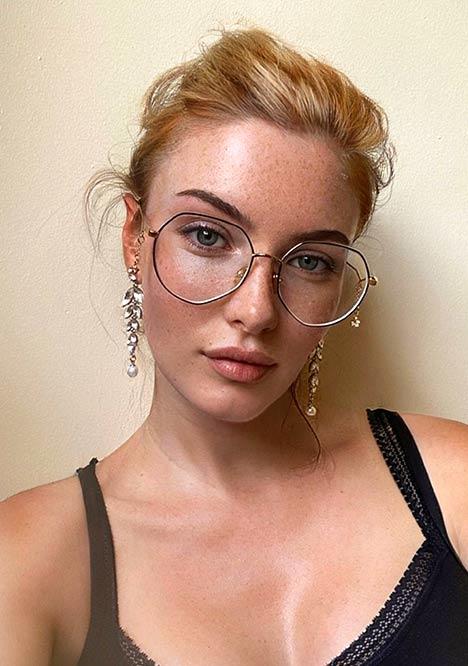How to find the right photophobia glasses (light sensitivity glasses)?
In medical terms, photophobia refers to the eye's sensitivity to light. Any light coming from the sun, street, and interior lights can cause pain and eye discomfort. For people who experience light sensitivity, the signals your retina sends to the brain generally are interpreted as discomfort or pain. The stronger the light source, the higher the probability of distress.
Some may even feel an itching or burning sensation, squinting or wincing when exposed to light, and experience excessive production of tears. Suppose you have these symptoms; it is high time to visit an eye doctor. The treatment will depend on the result of the eye check-up. In most cases, photophobia can either be a temporary or permanent effect of some underlying conditions. Additionally, you can expect that doctors might prescribe you photophobia glasses.

Why are someone's eyes so sensitive to light?
In context, photophobia is not a condition. Instead, it is a symptom of an underlying condition. Truthfully, one of the underlying problems of photophobia is migraine. Besides that, a handful of conditions bring light sensitivity to someone's eyes. Dry eyes, for instance, affect the corneas, which are the clear and protective outer layers of the eyes. The corneas technically contain several nerves. And when some problems occur in the eyes, it will result in bothersome signs, including light sensitivity.
Keratitis is another condition that concerns the cornea. It is an inflammation of your cornea that can also be classified into fungal, viral, and non-infectious keratitis. Cornea inflammation distorts light entering the eyes, which causes sensitivity.
Another reason why one's eyes get sensitive to light is allergies, specifically allergic conjunctivitis or pink eye. It occurs when something irritates the conjunctiva. It is a sensitive membrane covering the eyes and the insides of the eyelids.
Do photophobia glasses work?
In general, one needs to see an eye doctor to figure out the root cause of photophobia. This way, doctors can recommend proper treatment. However, various studies revealed that photophobia glasses help reduce and alleviate discomfort. In most cases, people feel relieved from headaches and eye pains after wearing photophobia glasses. These eyeglasses filter harmful wavelengths present in various common sources of outdoor and indoor lights.
Additionally, these photophobia glasses come in different forms. Sometimes, they are separate colored lenses that will fit over existing eyeglasses. Others, especially prescription glasses, are custom-made with a tint or special filter coating. This time, these tinted lenses are directly applied to prescription glasses.
When you see photophobia glasses, they generally come in gray, brown, or green filters. These colors are ideal for reducing glare. Those with glare problems and low vision usually use red, orange, or yellow filters.
How to choose the right glasses for photophobia?
People experiencing photophobia generally experience discomfort and poor vision. On other days, it can also be challenging to spend time outdoors. However, photophobia glasses are here to help them cope. One needs to choose the best glasses for them to alleviate the discomfort brought by photophobia.
Here are some tips one must consider:
1. Check for UVB and UVA protection. The lenses tint's darkness will not affect how much protection they get from ultraviolet rays. A UV filter, in general, does not help reduce glare. However, protecting one's eyes from UV and UVB brought by the sun is essential. Ensure that you get the right filter with considerable UV protection.
2. Get a well-fitted frame. A standard pair of sunglasses are different from photophobia glasses. They have wider arms and top panels to block light from entering your eyes. Glasses for light sensitivity are also known as "wraparound frames," which look closely similar to sports sunglasses. Ensure you get a well-fitted frame for proper protection and coverage.
3. Experiment on various light conditions. In some cases, patients prefer two pairs of photophobia glasses. There are glasses with darker tints on the sunny days and another with lighter tints on gloomy days and the environment.
4. Regular sunglasses will not be effective. Do not assume that since regular sunglasses have tints, they can help alleviate photophobia. Before you buy any tinted glasses, ensure you visit a specialist. They can provide you with a range of options which you find best.
Recommended articles:
Guide to buying the right fake glasses (non-prescription glasses)
Guide to picking the best glasses for night driving
Everything about pinhole glasses you should know
Guide to picking the best color blind glasses
Anti-glare glasses explained: pros, cons, and more
Transition glasses explained: find the right lenses for you
Transition lenses problems you should know (pros and cons)



















